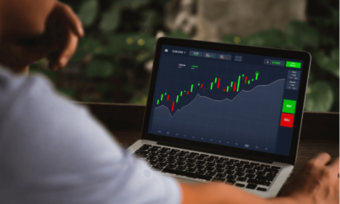Investment accounts: What are they and how do they work?

If you have some spare cash, it could be time to think about an investment account – they offer a way to make your money work harder by earning returns.
Investment accounts refers to a broad range of accounts that let you put your money to work by investing to earn a return.
With a wide choice of investment accounts available, it’s important to look beyond the returns you could earn, and select the type of investment account that suits your goals and comfort levels around risk. On the plus side, you can mix and match several different investment accounts to bring diversity to your portfolio of investments.
What are the different types of investment accounts?
Investment accounts are as different as the various types of investments available.
At the low risk end of the spectrum, a savings account, term deposit and even a deeming account can be regarded as an investment account.
If you are interested in investing in sharemarkets, a share trading account held with an online broker is a type of investment account that can be used to invest in equities, exchange traded funds (ETFs) and listed property trusts (known as A-REITs).
If you have a self-managed super fund (SMSF), you will likely need a variety of investment accounts – everything from a savings account to a share trading account.
Other types of investment accounts are available including those involve trading in cryptocurrencies or unlisted managed funds, and micro-investing accounts.
Which account is best for investment?
There is no one-size-fits-all investment account that is the ‘best’ choice for every investor. We each have different goals for our money. So choosing an investment account comes down to deciding where you want to invest – a decision you may choose to make with the help of a financial planner.
That said, there are certain features to look for in investment accounts:
Fees
Fees will eat into your investment returns, so it is always a good idea to look for an investment account with zero or minimal fees. Savings accounts in particular should come with no fees especially as the interest return your money earns is likely to be low. On a transaction account for say, a SMSF, it is worth watching out for monthly accounting-keeping fees – not all accounts charge them, so it is a cost that can often be easily avoided.
Fees can also apply to unlisted managed funds and ETFs. You will pay these fees regardless of the return your investment earns. This highlights the value of taking a close look at the fees you will pay and comparing the costs between different funds and fund managers.
Returns
One of the golden rules of investing is that high returns come with higher risks. So, while a particular type of investment account may have the potential to earn strong returns, chances are there is also a greater risk that you could lose money if your investment falls in value.
Spreading your money across a variety of investment accounts can be a way to smooth out returns and lower risk. You may for instance, decide to hold some funds in a term deposit, while also investing in shares and ETFs. This diversification means your money won’t bear the full brunt of a fall in any one investment market. You should keep in mind too that past performance is not a reliable indicator of future performance.
Ease of access
The speed with which you can access funds held in an investment account is referred to as ‘liquidity’. It is something you may want to bear in mind because unexpected bills or expenses can crop up, and you may need to access cash fast.
Savings accounts tend to be very liquid because your money is usually at-call. But with a term deposit, you will likely be charged a penalty if you need to withdraw some or all of the funds before the fixed term expires.
With a share trading account, you may be able to cash in some of your shares in as little as 24 hours. However, shares are typically regarded as a long-term investment, and selling when the market is experiencing a downturn because you need extra cash can mean making a capital loss on your investment. Having some ‘rainy day’ money in an at-call investment account, such as a high interest savings account, can help you manage any curve balls without having to dip into other investments prematurely. You may also like to consider the idea of setting up an emergency fund to give you an extra buffer.
Is an investment account a good idea?
The beauty of an investment account is that it will often pay a return on your money. This is passive income – that is, money you don’t have to work for, and the extra income you earn can be reinvested, used to achieve personal goals, or to pay down debt.
By taking advantage of an investment account, you can join the 9 million Australians who hold investments outside their home and superannuation, according to research in an ASX Investor Study.
Better still, by reinvesting the returns on your investment account – be they dividends on shares, interest on savings accounts, or distributions from managed funds or ETFs – you can ramp up the benefits of compounding returns to build long-term wealth.
The key is to select the investment accounts that are right for you, your goals and how you feel about risk. If you’re not sure about these factors, it can help to speak with a professional adviser.
Main image source: MEE KO DONG/Shutterstock.com.
This article was reviewed by our Deputy Editor Sean Callery and Sub Editor Jacqueline Belesky before it was updated, as part of our fact-checking process.

Try our Online Share Trading comparison tool to instantly compare Canstar expert rated options.





